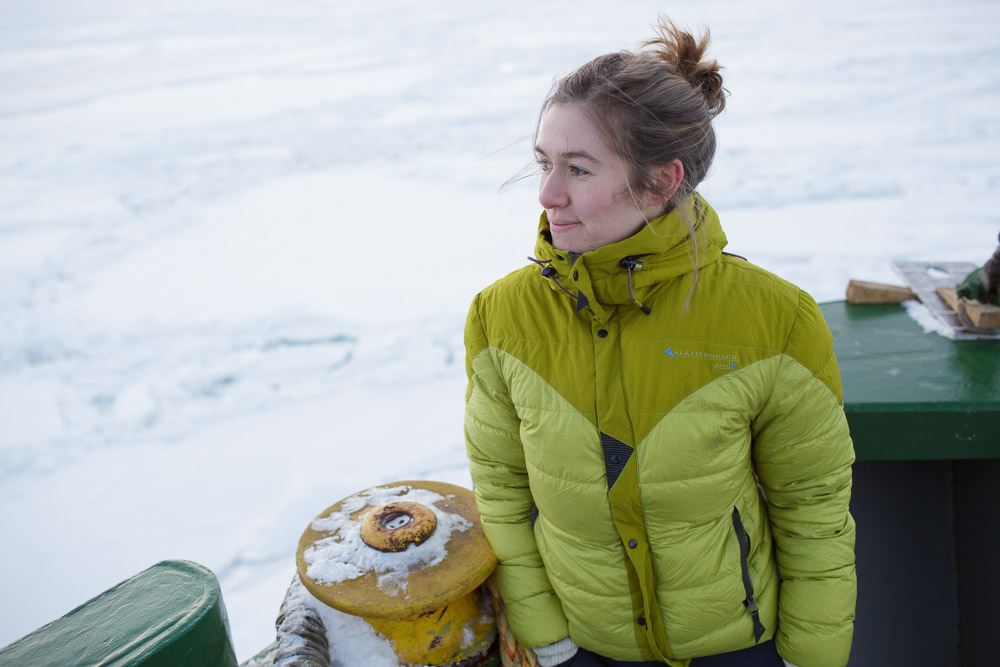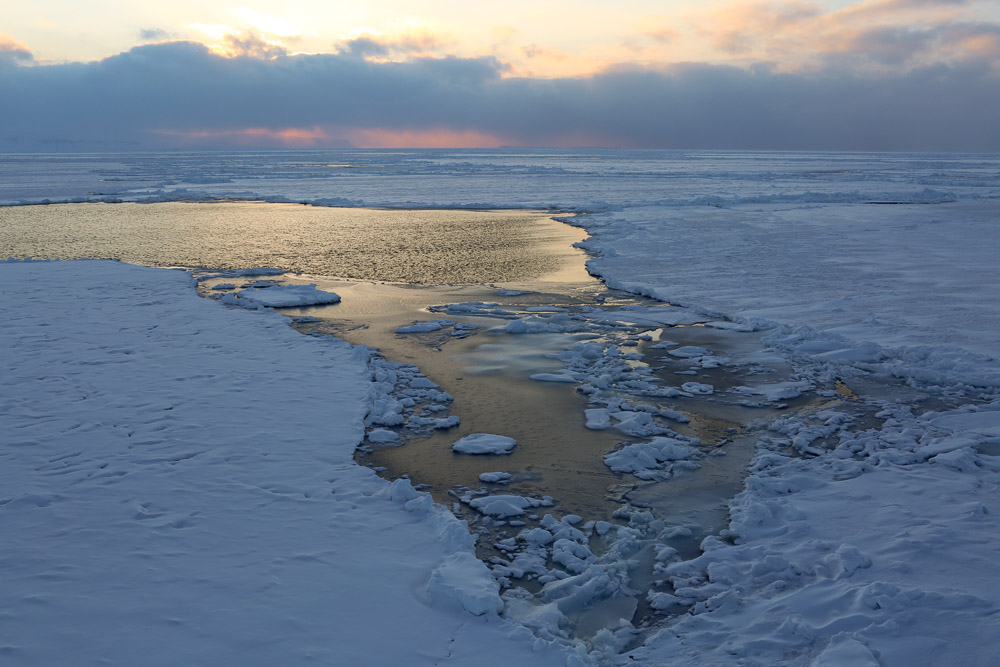A letter from Svalbard’s dwindling sea ice

Greenpeace’s Larissa Beumer on board the Arctic Sunrise in the Spitsbergen archipelago. (Pic: Nick Cobbing, courtesy of Greenpeace).
The Arctic sea ice has reached its maximum winter extent for this season, and it was a record low, as reported here on the Iceblog.
The Greenpeace ship the Arctic Sunrise is currently sailing in the Hinlopen Strait in the Arctic archipelago of Spitsbergen, checking out the ice conditions. Larissa Beumer is on board. I wanted to know what the ice situation was like, and she sent me this report. Photographer Nick Cobbing is also on board, so that means we can have a couple of his wonderful pics on the Iceblog. Thanks Nick and Greenpeace.
LARISSA BEUMER: “The ice conditions up here vary considerably from year to year. But this year is really extreme. On the west coast, almost none of the fjords are frozen up. The only exceptions are Dicksonfjord and Van Mijenfjord (and that one isn’t frozen up as far as it “normally” is).
On the east coast, there is no solid, stable ice, frozen through like it normally is. The ice there is moving a lot, it has often broken apart and been blown together again by the wind, so it’s not reliable. (And in general there is less ice there as well).
That means tourists and locals are very severely restricted in their activities. Dog sled and snowmobile tours normally mainly use the frozen-over fjords on the west coast. But this year, a lot of the usual main routes are not usable. That means some of the main destinations like Pyramiden (and Isfjord radio) can only be reached by taking major detours over the glacier systems. The east coast is another of the main destinations for snowmobile excursions. You can still get there quite well, but driving over the ice is more risky than usual. (One tourist group went through the ice this season, but nobody was hurt).
We sailed north along the west coast, then east along the north coast to the Hinlopen strait. We didn’t encounter any large stretches of ice masses anywhere on route. Normally, there is so much ice up there in winter that the route is only navigable from June or July.
Actually, in “normal” years, the pack ice extends down from the north to the northern coast of Spitsbergen right into summer. Now it’s just the bginning of April and the pack ice only starts much further north. Sailing to Nordaustlandet is normally still challenging in August, because of the ice conditions. This year, it’s more or less navigable already. It used to be that expedition cruises billed as “Circumnavigation Cruises” had to change their route because the ice in the north was still so thick they couldn’t get through. I think at the moment you could already do a circumnavigation without any problems.
The ice we can see is mainly fresh ice, one-year ice, with open water here and there and a lot of breaks in it. As I said before, it’s moving about, breaks and is pushed together again. As far as we can see, the thickness is relatively varied, but there is a lot of thin ice amongst it.
The current ice chart from the Norwegian Meteorological Institute shows that a lot of ice from the south has been pushed into the Hinlopen Strait by the wind over the last two days. All this ice just wasn’t there a few days ago. It comes from the pack ice in the north-east, towards Franz-Josef-Land. So it’s not ice that formed here.
So, all in all, it seems fair to say that this year the ice conditions up here around Svalbard are catastrophic and way outside of normal variation. Oscar, our polar-bear guide, says he has never experienced anything as bad as this in the 13 years he has being living here.”
Larissa Beumer, on board the Arctic Sunrise, Spitsbergen.
















